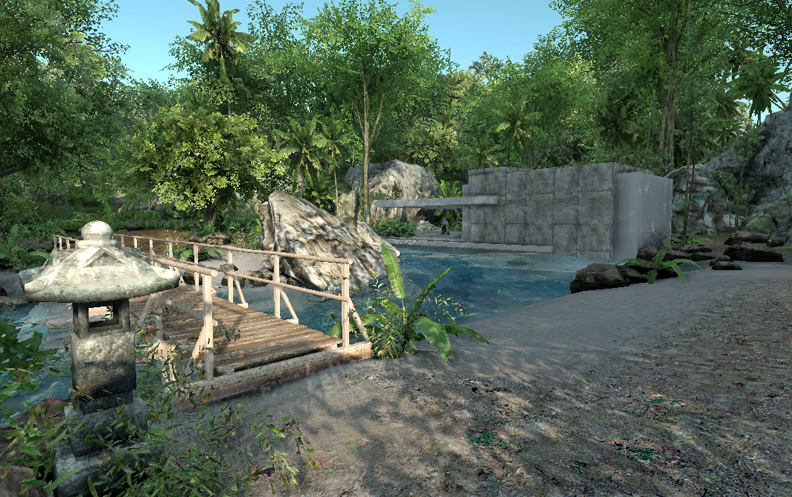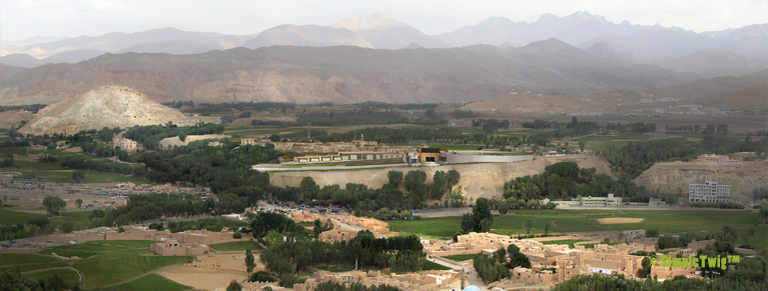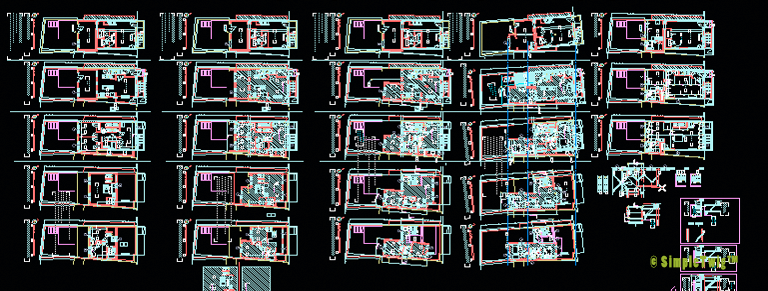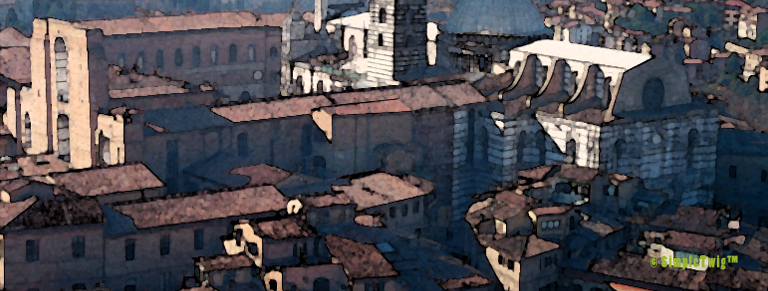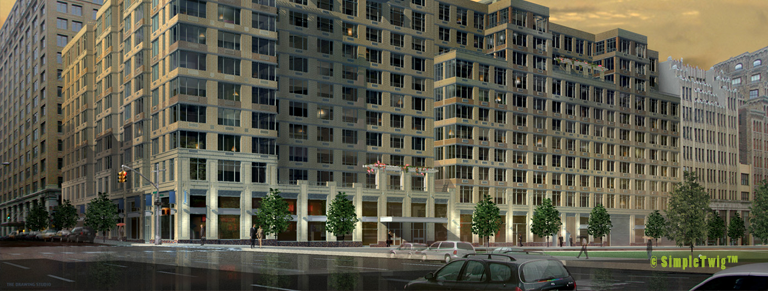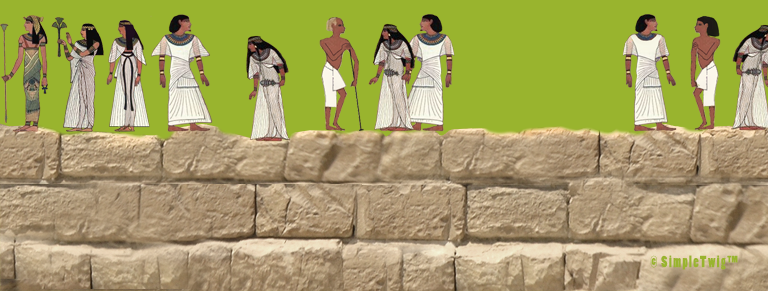We’ve seen them, a few spectacular buildings sprinkled here and there like small buttons on a person’s outfit. That is, sometimes the outfit itself is fantastic and the buttons are highlights in the whole, like Rome, Italy or other vernacularly built towns and cities who were fundamentally constructed on the resources and technology available, or like a Floridian tourist who’s flowered shirt and sandals leave a lot to be desired. For instance, this sculpture by Duane Hanson called Tourists II.
While ‘tacky’ is something that Americans would typically refer to as comfortable when referring to their dress, one could say that ‘tacky architecture is also comfortable.’ But, despite the lack of historical knowledge by many Americans there is a quality of environment most European cities have achieved, due mostly to the before mentioned resources/technology used’ that achieve beauty that is greater than a single edifice, i.e. their outfits achieve sophistication and high degree of desirability among the population as a wonderful place to live. To make clear, resource and technology refers to building materials available and the technology available to employ those materials to create a structure. Most European and world cities from 100 years and older echo the wood, stone and clay they had available to them to build with and the construction methods or technology they knew to employ their use. Many Italian and Greek hill towns for example achieve a unified look about them because of the similar used of materials. For instance, Siena is a beautiful deep red town which echoes the clay used for their tile roofs and brick structures. It is so beautiful as seen on the whole that the color Siena is a direct result of their local materials.
The problem in today’s world is the ease of which materials can be shipped from one part of the world to another. The Architect, if they so choose, can simply selected a material based on a photograph in a magazine, not considering where in the world that material originates or how it will impact the context in which it will be used. In so many cases the material might be selected with the notion of ‘exotic’ in mind, that teak imported from Thailand is a better choice than oak shipped from the adjacent state over. Like our fashion statements people like to make, sometimes ‘showing off’ by wearing something exotic is used to make oneself special and unique if only in the eye of the wearer. But, if one considers what people wear during sophisticated events, like the Grammy awards, then one notices men typically wearing uniform tuxedos with only very slight variety and women wearing the focal points of brightly colored (relative to black) gowns. But here there is also a well balanced uniformity in that most, except for the tacky perhaps, wear either a tux or a gown. It is the uniformity with pinpointed focal points, like buttons on an individual clothing, that achieves sophistication.
So, given a city on a whole, what can we learn? We can learn that neighborhoods need uniformity combined with a well balanced focal points. Boston, Massachusetts is one of the few cities in the United States that achieves this. Why? Just think of when much of it was built and apply the resources/technology rule. So what can a modern city do to restrain the use of inappropriate design schemes, or perhaps the question should be, should they try to restrain variety in the use of materials, colors, textures and even perhaps form?
Well, as with everything there is the consideration of composition. A city, a vast as it can be, can be viewed as a composition, like a painting. There have been many painting throughout history, but rarely, maybe never would one see a toilet stuck to a painted rendition of a angel, stuck to a series of strings. Maybe a person will do that one day, but in general, and perhaps always, great art achieves uniformity. Even the most pop artist will attain it, for they are making a statement of completeness, one of pure compositional harmony. The compositions are, like any composition, relating all their parts with one another to achieve their single objective. Cities too could be like this, yet in the US they are unfortunately torn apart with components that scare and tear at the typically underlying fabric that used to represent the identity of the city. Here’s an example of what I mean: In Bellbrook, Ohio, a very small town, there are the historical wood clad, painted white, 45° roofs that are of a typical shape, orientation, location and spacing that made up the identity of this charming town. As technology and foreign resources (foreign meaning materials that are not local and/or materials that are not natural, i.e. man-made design concepts), as well as design concepts like roof forms, parking accommodations, setbacks and other influences impacted future built buildings, the cohesiveness of this village is under threat. Threat? Yes because what could easily happen at this point is the old structures, those that unified the town and gives its identity as a unique ‘person’ could be wiped out by ‘plastic surgery’ whose intention are to make every place (person) look the same, while at the same time achieving a plastic and disconnected look and feel. So Bellbrook, Ohio has a relatively new bank, gas station, fire station and 50’s government building that all look out of character. It’s not that this little town can’t have variety, but it’s more like having a community that reflects the same values and goals is a stronger community than one that is fighting each other for attention. One is unified and thus strong, the other is in-fighting and thus weak.
And thus, as you can see, I do draw a lot of parallels between the individual human, humans as a group and the world of Architecture and Urban Design, Art, Fashion, Design and the other arts. We are what we build.
And if you think it’s not important to have a unified city composition, I ask you then to leave the house dressed in a pin-striped jacket with a t-shirt over it wearing short shorts and sandals in the middle of winter and have you ask yourself, ‘do you feel you are dressed appropriately?’ If this article has enlightened you in the slightest, then please leave the creation of Architecture in the hands of the professionals, and leave the ‘I wish to see something old fashioned, modern, with Corinthian columns’ or whatever, out of the conversation when chatting with your Architect. Instead, focus on your program requirements, your budget and reinforcing the notion that what you want to see is something appropriate for ‘my’ building type that enhances the community on the whole.
Despite the sensibility of this article, we in America have a lot of ‘I”m loud and proud’ personalities. This reflects the ‘make it in America, first by being noticed and second, perhaps, by achievements. I do respect those who have achieved something, but less so for sports personalities and even less for non-actor TV personalities who haven’t achieved anything except how to wear their hair and makeup. Unfortunately, because of an inherent competition in the psyche of many Americans of ‘being noticed,’ so to will many built buildings, who will stand ‘screaming at the world to be noticed’ by standing in stark contrast to everyone and everybody around them.
NEXT ARTICLE:
In the next article, I will propose a way of achieving a urban ‘unified whole composition’ without sacrificing the potential of being a focal point for the community.
NOTE:
You will notice that in any given sentence I will be talking about us humans, then switch to buildings and then back again without making any distinction of this change, as if it is normal to do so. I understand that I am doing this ‘switching’ and thus am actually stitching these two things, humans and buildings, into interchangeable tangibles. Yes, they are, as expressions, similarities, or at least I hope to get the reader to acknowledge how they can be interchangeable, to help the casual observer understand the relationship of their observable Architecture within our human context on this planet.
Nicholas Buccalo and SimpleTwig Architecture
SaveSave
